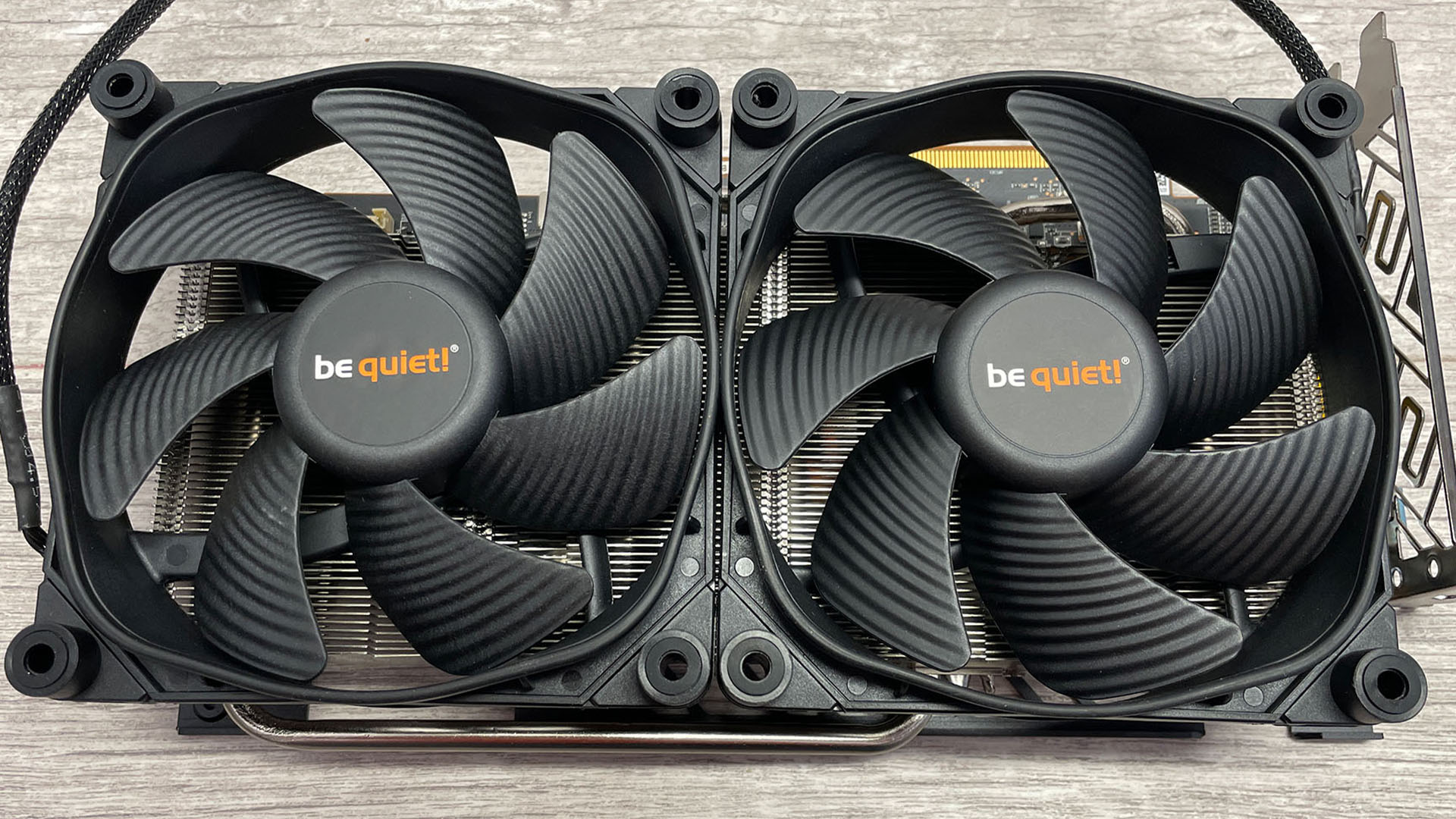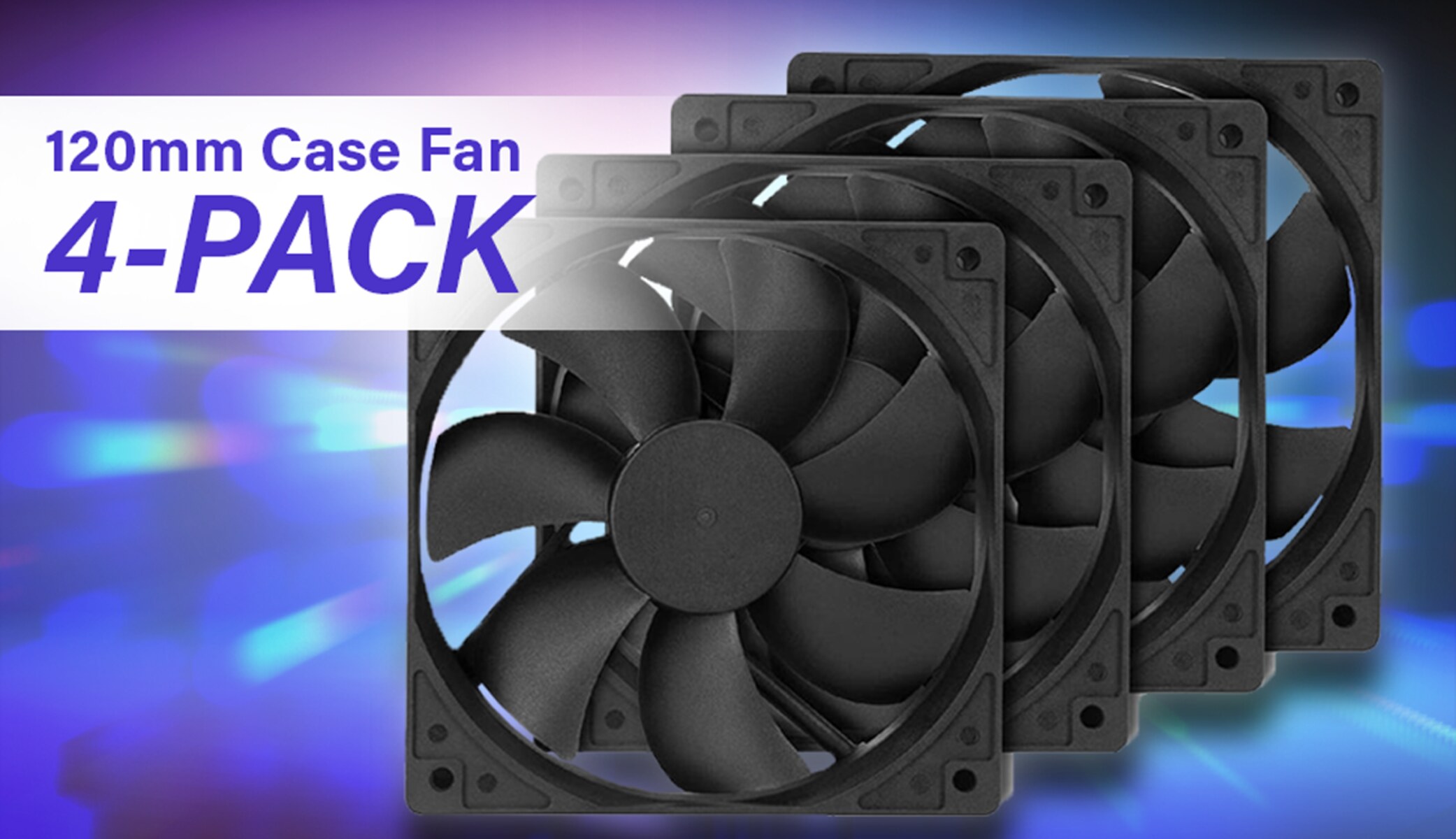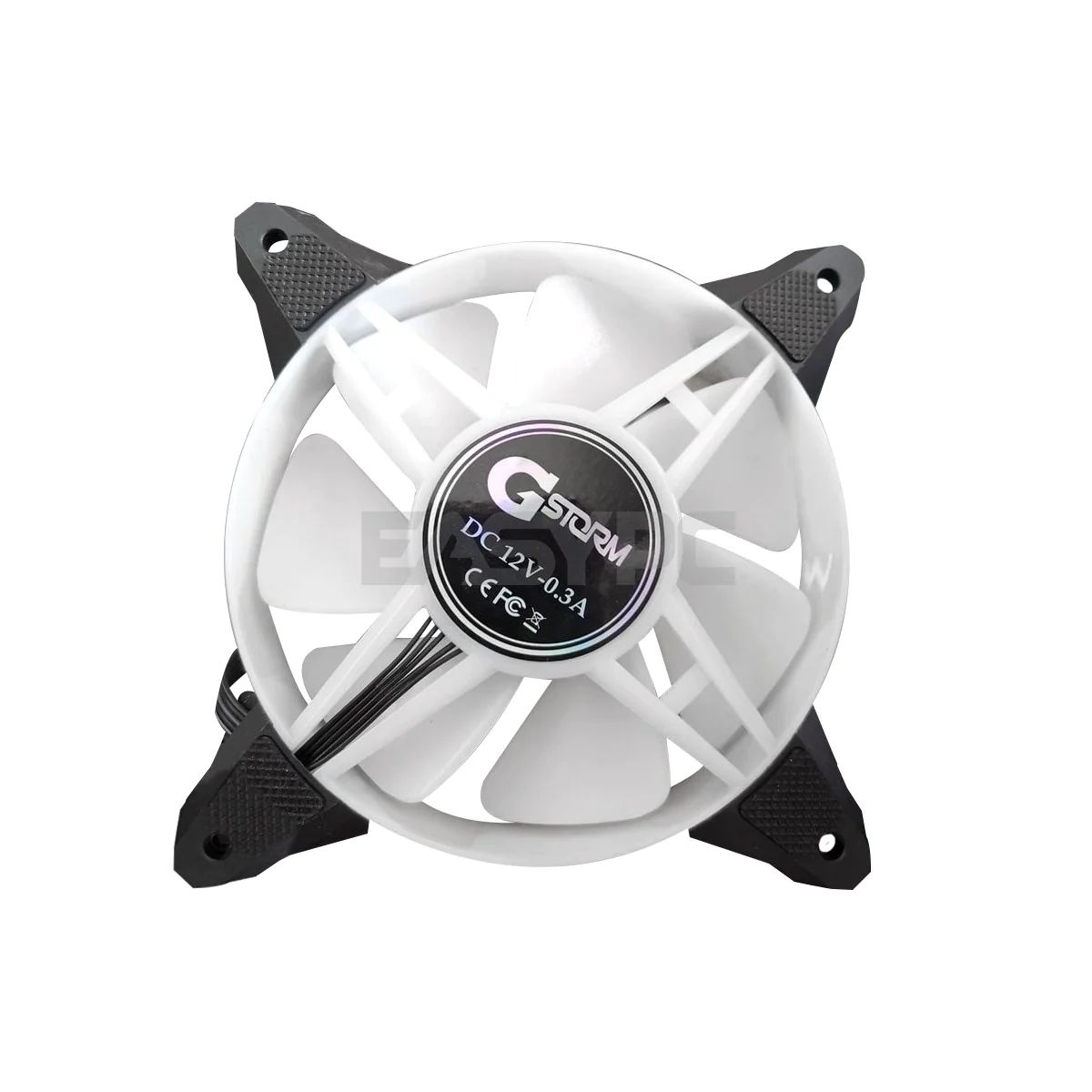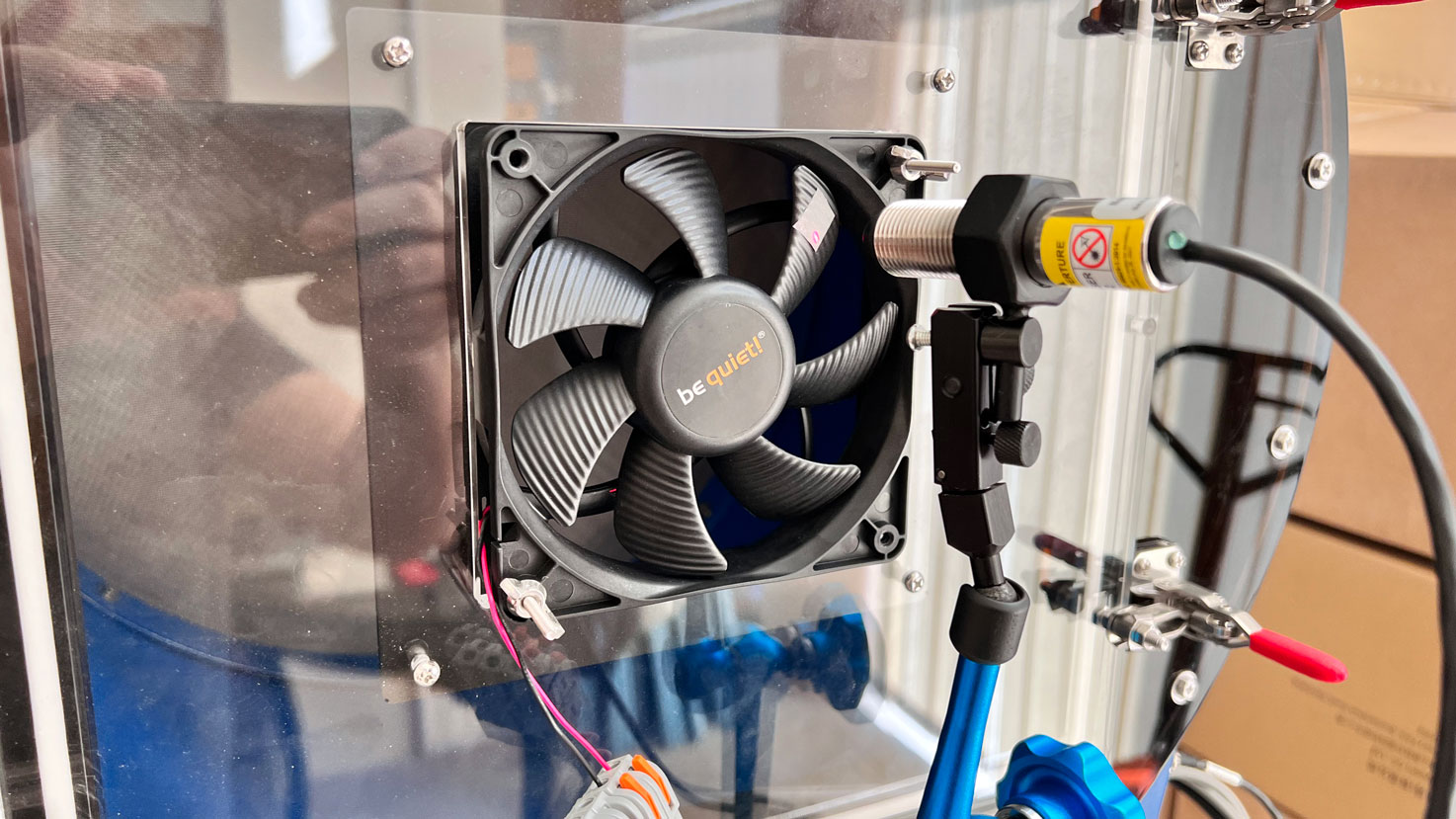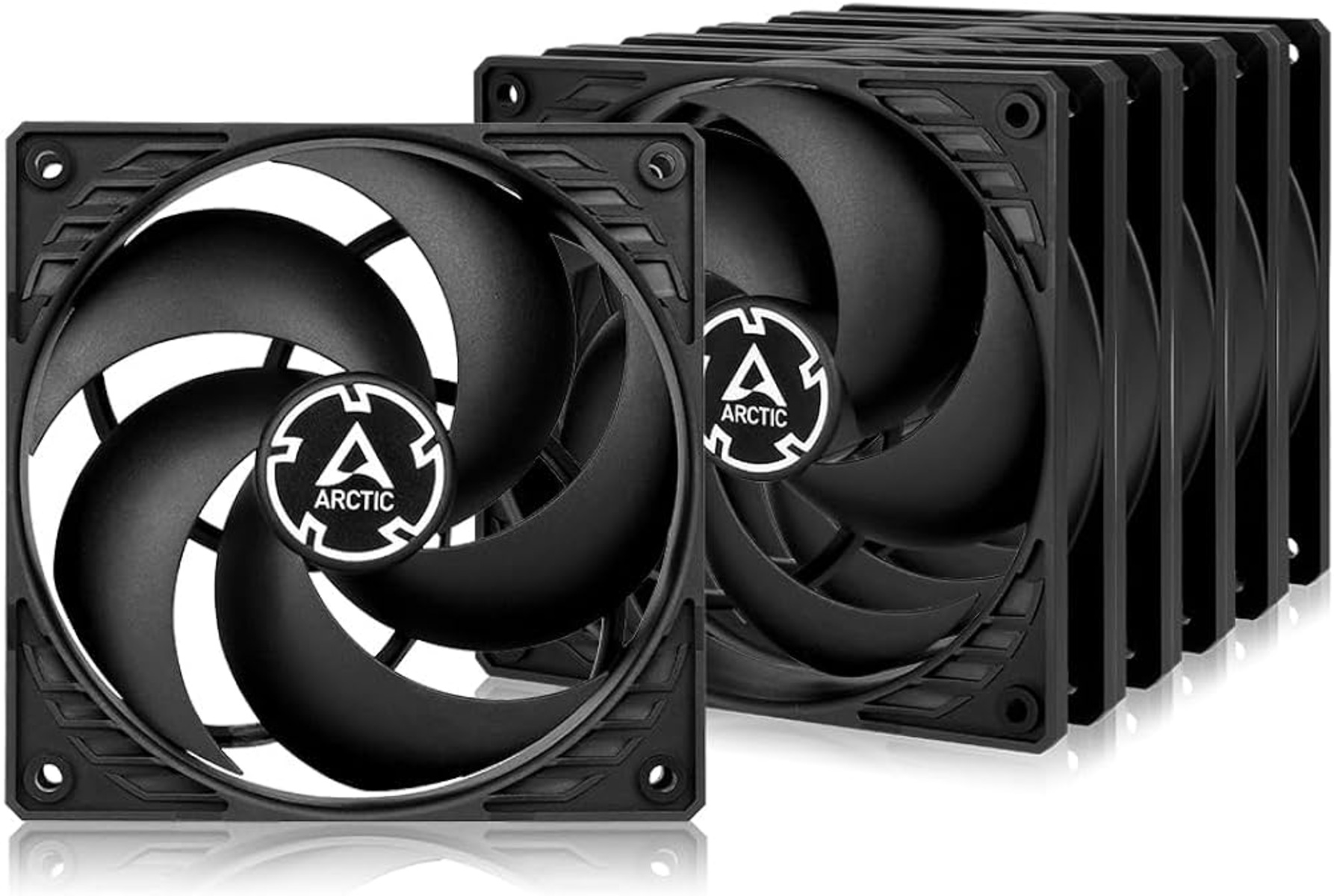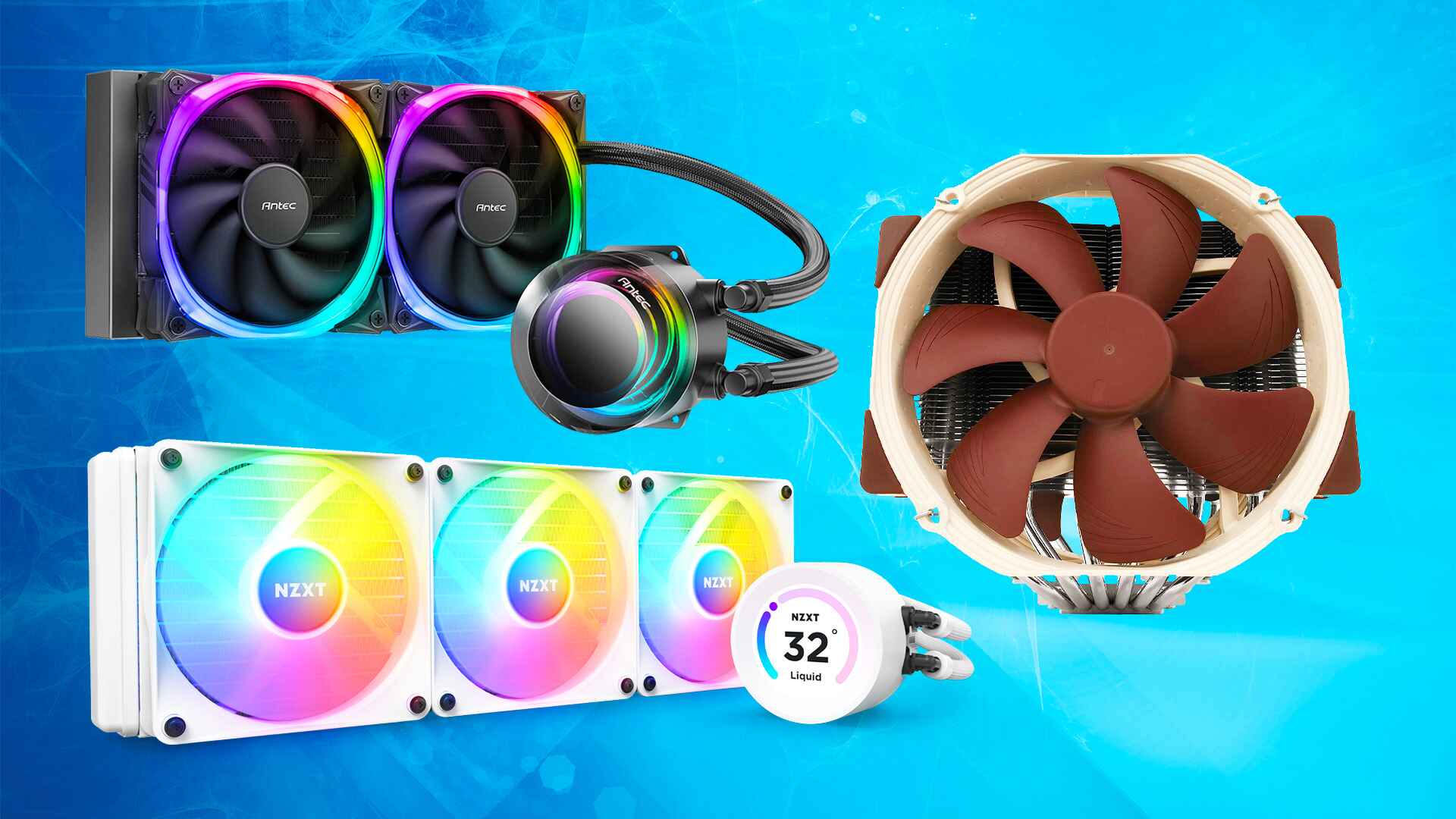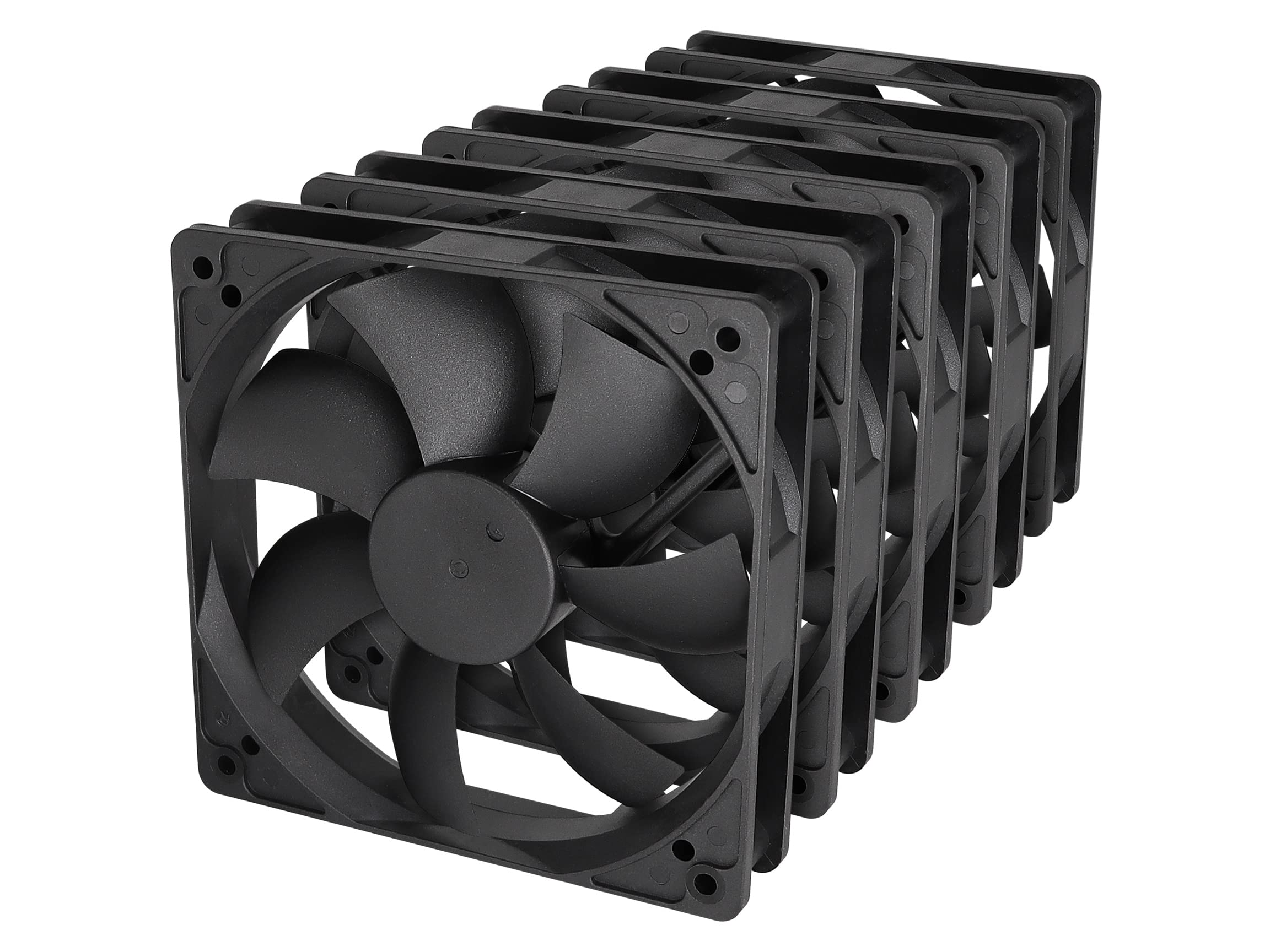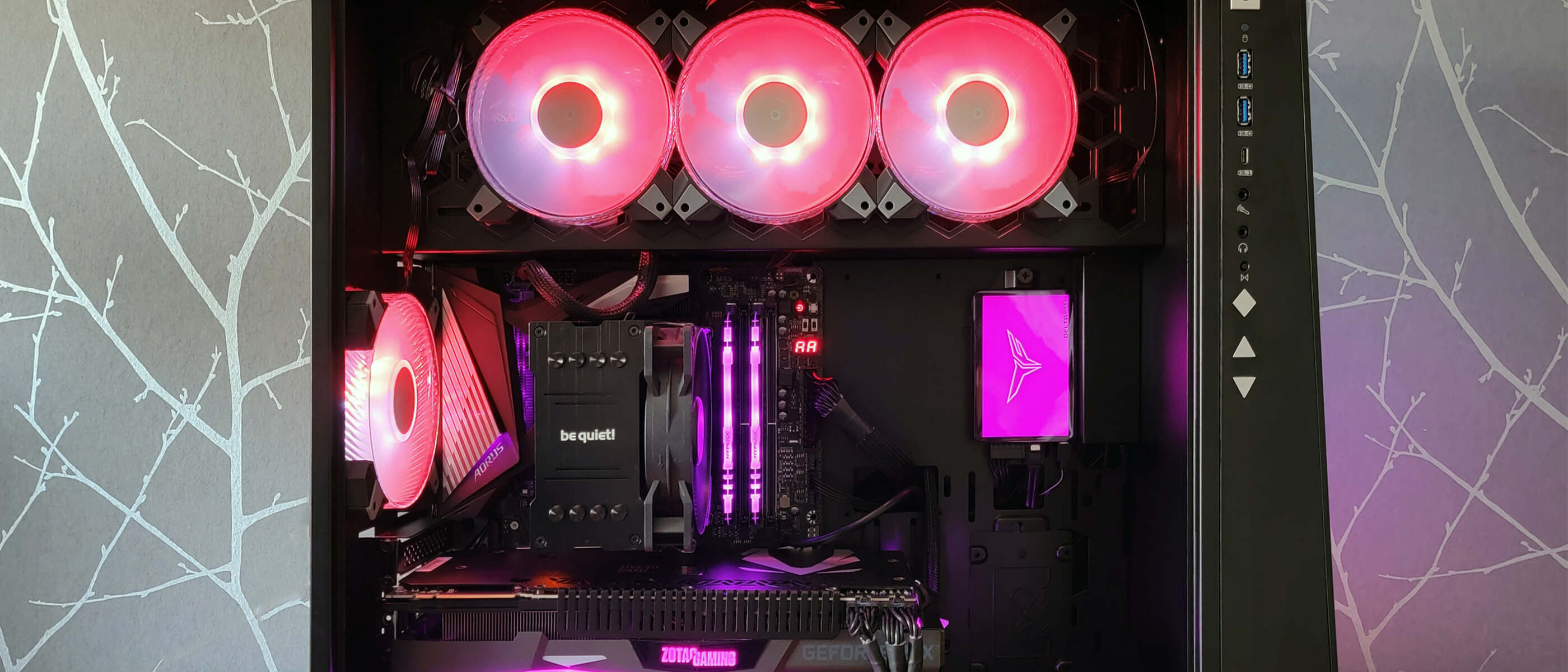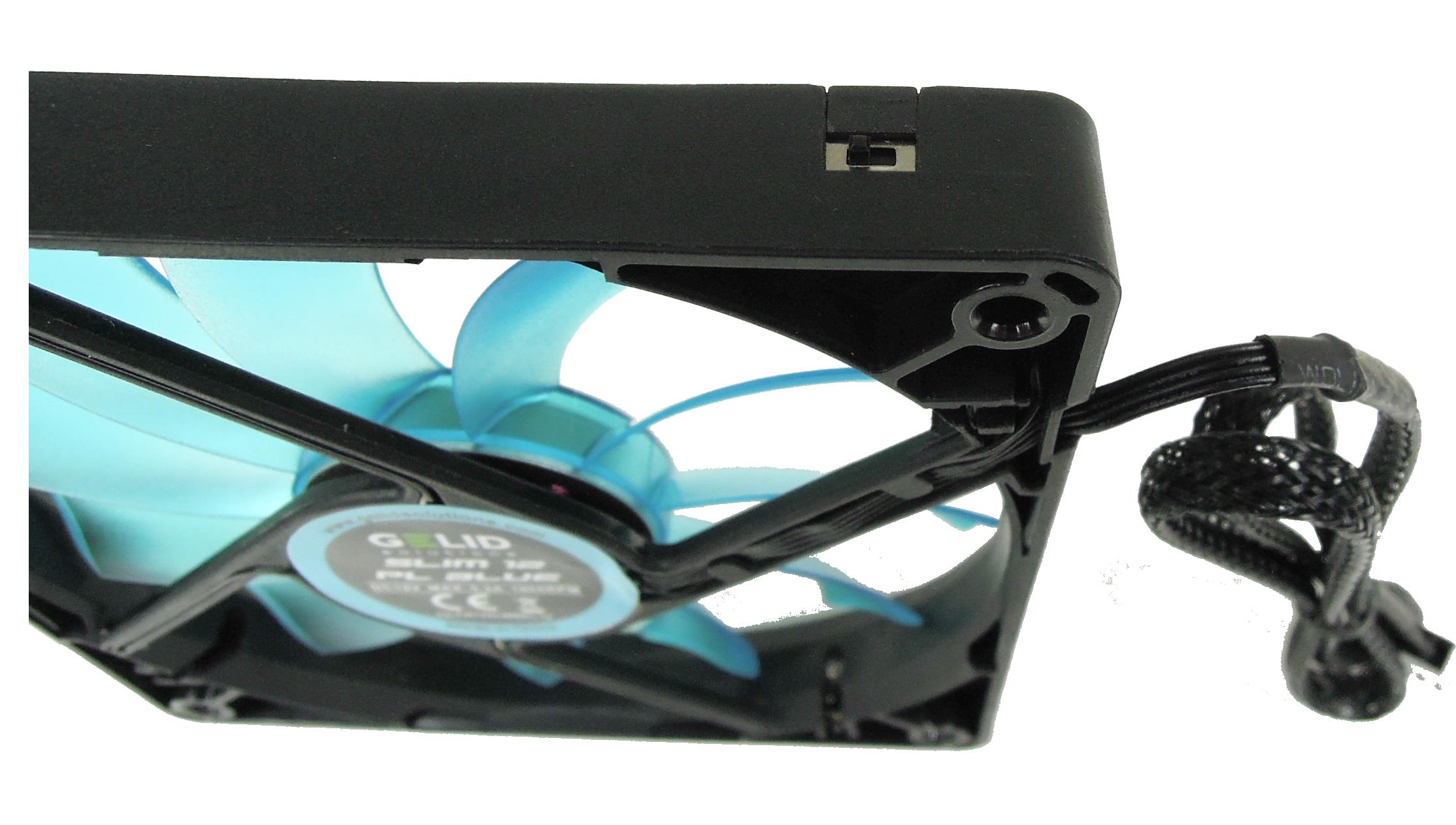Introduction
Welcome to our guide on the power usage of 120mm case fans! If you are familiar with computer hardware, you probably know that case fans are essential for keeping your system cool and preventing overheating. However, you may be wondering how much power these fans actually consume.
In this article, we will explore the power usage of 120mm case fans, which are among the most commonly used fan sizes in computer cases. We’ll delve into why power usage matters, the factors that affect it, and how to measure and calculate the power consumption of a 120mm case fan. Additionally, we’ll examine the energy efficiency of different fan models and present some tips for reducing power usage.
Understanding the power consumption of a 120mm case fan is crucial for several reasons. First, it allows you to estimate the overall power requirements of your computer system, which is essential when selecting a suitable power supply unit (PSU). Knowing the power consumption can also help you determine the potential impact on your electricity bill and decide whether to invest in more energy-efficient fan models.
Furthermore, understanding how power is utilized by 120mm case fans can contribute to your system’s overall performance and cooling effectiveness. By optimizing the power usage, you can strike a balance between cooling efficiency and energy efficiency. This can result in quieter fan operation, improved thermal management, and potentially even prolong the lifespan of your computer components.
In the following sections, we will dive deep into the various aspects of power usage in 120mm case fans. So, let’s explore the world of fan power and discover how to make informed decisions regarding your computer’s cooling system!
What is a 120mm Case Fan?
A 120mm case fan is a cooling device designed to remove hot air from computer cases. It is named after its size, with a diameter of 120mm, which is a standard measurement for case fans. These fans are widely used in desktop computers, gaming systems, and servers to maintain optimal operating temperatures and prevent overheating.
120mm case fans are crucial components of a computer’s cooling system. They work by drawing air from outside the case and directing it over the heat-producing components, such as the CPU (Central Processing Unit) and GPU (Graphics Processing Unit). By increasing the airflow, they help dissipate heat and maintain lower temperatures, thereby enhancing the system’s stability and performance.
The 120mm fan size has become popular due to its balance between size, airflow capacity, and noise level. Smaller fans may not provide sufficient cooling power, while larger fans might not fit in all cases or may produce excessive noise. The 120mm size strikes a sweet spot by offering a good combination of cooling performance, compatibility, and noise reduction.
Nowadays, 120mm case fans come in various types, including standard fans, PWM (Pulse-Width Modulation) fans, and LED fans. Standard fans operate at a fixed speed and are controlled by a switch or motherboard headers. PWM fans, on the other hand, offer variable speed control based on temperature changes. LED fans feature built-in RGB (Red Green Blue) lighting, allowing users to customize the fan’s color and lighting effects.
120mm case fans are typically mounted on the front, rear, or top of the computer case, depending on the case design. Some cases even accommodate multiple 120mm fans for improved cooling. It is important to note that while case fans play a crucial role in cooling, they work in conjunction with other components, such as CPU coolers and graphics card fans, to ensure optimal thermal management.
To summarize, a 120mm case fan is a cooling device used in computers to dissipate heat and maintain lower temperatures. Its standardized size, efficient airflow, and compatibility make it a popular choice among computer enthusiasts and professionals.
Why Does Power Usage Matter?
The power usage of a 120mm case fan is a significant factor to consider for several reasons. Understanding and managing the power consumption of your computer’s cooling system can have both financial and practical implications.
One of the primary reasons power usage matters is its impact on your electricity bill. As computer systems continue to become more powerful and energy-hungry, the overall power consumption of your system can increase significantly. Case fans, although relatively small components compared to power-hungry components like CPUs and GPUs, still contribute to the overall power draw of your system. By knowing the power usage of your 120mm case fan, you can estimate its contribution to your electricity costs and make informed decisions about energy efficiency.
Besides the financial aspect, power usage also affects the practical aspects of your computer system. High power consumption by case fans can result in increased fan noise, which can be bothersome, especially if you prefer a quiet computing environment. By selecting fans with lower power usage, you can help reduce the noise generated by your system and enjoy a more peaceful computing experience.
Furthermore, power usage can impact the overall performance and temperature management of your computer. Excessive power consumption by case fans can lead to unnecessary heat generation and increase the workload on your power supply unit (PSU). Over time, this can potentially degrade the performance and stability of your system. By choosing power-efficient 120mm case fans, you can mitigate these risks and ensure optimal cooling performance while minimizing the strain on your components.
Considering power usage also becomes crucial when upgrading or building a new computer system. It helps in determining the power requirements of your system and selecting an appropriate PSU. Power-efficient case fans, along with other energy-efficient components, can contribute to a more sustainable and environmentally friendly computing setup.
Overall, power usage matters because it directly affects your electricity costs, noise levels, system performance, and sustainability. By being aware of the power consumption of your 120mm case fans and making informed choices, you can achieve an optimal balance between cooling efficiency, energy efficiency, and overall system functionality.
Factors that Affect Power Usage
Several factors influence the power usage of a 120mm case fan. Understanding these factors can help you make informed decisions about fan selection, power supply requirements, and overall system efficiency. Let’s explore some of the key factors that affect fan power consumption.
1. Fan Speed: The speed at which a case fan operates directly impacts its power usage. Generally, higher fan speeds result in increased airflow but also higher power consumption. Fans with adjustable speed settings or PWM functionality can provide better control over power usage by allowing you to regulate the fan speed based on temperature needs.
2. Fan Design and Size: The design and size of a case fan can also affect its power usage. Fans with more efficient motor designs and optimized blade shapes may consume less power while providing effective airflow. Additionally, larger fans generally require more power due to their increased size and higher airflow capacity.
3. Bearing Type: Different case fans incorporate various bearing types, such as sleeve bearings, ball bearings, or fluid dynamic bearings. The type of bearing affects the fan’s efficiency and power usage. Fans with more advanced bearing technologies, like fluid dynamic bearings, tend to have lower power consumption and a longer lifespan.
4. Build Quality: The build quality and materials used in a case fan can have an impact on its power usage. Fans constructed with high-quality components and durable materials tend to have more efficient power consumption. Cheaply made fans may require more power to operate and are generally less energy-efficient.
5. Fan Control: The method used to control the fan’s speed and operation also affects its power usage. Fans controlled by motherboard headers, switches, or dedicated fan controllers can have variable power consumption. Automated fan control systems, like PWM (Pulse-Width Modulation), allow for more precise control and power optimization based on temperature changes.
6. Airflow Restrictions: Any obstructions or restrictions in the airflow path of a case fan can impact its power usage. Proper cable management, maintaining a clean and dust-free environment, and ensuring adequate ventilation in the case can reduce airflow restrictions and decrease the workload on the fan, leading to lower power consumption.
It is essential to consider these factors when selecting a 120mm case fan for your system. By choosing fans with efficient designs, adjustable speed controls, and reliable build quality, you can optimize power usage while ensuring effective cooling performance.
In the next section, we will explore how to measure and calculate the power consumption of a 120mm case fan, allowing you to have a better understanding of the energy requirements for your system.
Measuring Power Consumption
Measuring the power consumption of a 120mm case fan is essential for understanding its energy requirements and optimizing your system’s overall power usage. There are several methods and tools available to measure the power consumption of electronic devices, including case fans.
One common approach is to use a wattmeter or power meter, which is a device that measures electrical power consumption. These meters typically plug into the wall outlet, and the device being measured (in this case, the case fan) plugs into the meter. By monitoring the power usage in real-time, you can determine the exact power consumption of the fan.
Another method is to use a multimeter, which is a versatile electrical measurement tool. To measure power consumption with a multimeter, you need to set it to measure current (amps) in series with the fan’s power supply. This method requires some basic understanding of electrical measurements and circuit connections.
It is worth mentioning that case fans typically have low power consumption, often below 5 watts. Therefore, precision and accuracy in measuring such low power consumption is crucial. Using a meter that offers high resolution and low measurement error is recommended for obtaining accurate readings.
In addition to measuring the power consumption directly, another approach is to refer to the fan’s specifications provided by the manufacturer. Most reputable manufacturers provide detailed technical information about their fans, including power consumption. These specifications can be found in the user manual, product datasheets, or the manufacturer’s website. However, it’s important to note that the specified power consumption may vary depending on the fan’s operating conditions, such as the speed setting and system configuration.
Keep in mind that when measuring power consumption, it is advisable to run the fan under typical operating conditions and monitor its power usage over some time to get a more accurate average reading. This ensures that the measured power consumption represents the fan’s actual usage in real-world scenarios.
Understanding the power consumption of your 120mm case fan is crucial for estimating its contribution to your system’s overall power draw, determining energy efficiency, and making informed decisions regarding cooling performance. Whether you choose to use power meters, multimeters, or manufacturer specifications, accurately measuring the power consumption of your case fan will provide valuable insights into your system’s energy requirements.
Average Power Usage of 120mm Case Fans
When it comes to the average power usage of 120mm case fans, it is important to note that power consumption can vary depending on factors such as fan design, speed settings, and overall system configuration. However, we can provide a general range based on typical specifications and user experiences.
On average, 120mm case fans consume between 1 to 5 watts of power. Fans operating at lower speeds or those designed with energy efficiency in mind tend to have a lower power consumption. These fans often fall within the 1 to 3 watts power range. On the other hand, fans with higher speeds and performance capabilities can consume more power and may reach the 4 to 5 watts range.
It is worth noting that the power usage can be influenced by various factors, including the fan’s motor efficiency, blade design, bearing type, and control mechanism. Fans with more advanced technologies, such as PWM control or fluid dynamic bearings, usually offer better energy efficiency and lower power consumption.
Additionally, different fan models from various manufacturers can have slightly different power consumption levels even if they share the same size. Therefore, it is helpful to refer to the manufacturer’s specifications or user reviews for more specific information on the power usage of a particular 120mm case fan model.
While the power consumption of 120mm case fans may seem relatively low compared to other components in a computer system, it is still important to consider their cumulative effect on the system’s overall power draw. If you have multiple case fans installed, the combined power consumption can add up. Therefore, it is advisable to factor in the power consumption of these fans when selecting a power supply unit (PSU) for your system.
It is also worth mentioning that power usage tends to increase when fans are operating at higher speeds or are under heavy load, such as during intense gaming or CPU-intensive tasks. Therefore, it can be beneficial to adjust fan speed or utilize fan control mechanisms, like PWM, to optimize power usage based on the system’s cooling needs.
Understanding the average power usage of 120mm case fans allows you to make informed decisions regarding fan selection, cooling performance, and energy efficiency. By choosing fans with lower power consumption and employing effective fan management strategies, you can strike a balance between cooling effectiveness, noise levels, and power consumption in your computer system.
How to Calculate Power Usage of a 120mm Case Fan
Calculating the power usage of a 120mm case fan involves a straightforward process that requires knowledge of the fan’s voltage and current consumption. With this information, you can use Ohm’s Law to determine the fan’s power usage. Here’s a step-by-step guide on how to calculate the power consumption of a 120mm case fan:
- Identify the fan’s voltage: Check the specifications provided by the manufacturer or refer to the fan’s label to determine its voltage rating. Most case fans operate at 12 volts (V), but it’s essential to verify this information.
- Measure the fan’s current: Using a multimeter set to measure current (amps), connect the multimeter in series with the fan’s power supply. Ensure that the multimeter is properly connected to provide an accurate reading of the fan’s current consumption.
- Note the current reading: Once the multimeter is correctly set up, power on the system and allow the fan to operate. Observe the multimeter’s reading for current consumption in amperes (A).
- Calculate the power usage: Now that you have the voltage (V) and current (A) values, you can use Ohm’s Law to calculate the power usage of the fan. The formula for power (P) is P = V * I, where P represents power, V represents voltage, and I represents current. Multiply the voltage (V) by the current (I), and you will obtain the power consumption in watts.
For example, if the fan operates at 12 volts (V) and the measured current is 0.25 amperes (A), the power consumption can be calculated as follows:
P = 12 V * 0.25 A = 3 watts (W)
In this example, the 120mm case fan consumes approximately 3 watts of power during operation.
It’s important to note that power consumption may vary depending on the fan’s speed settings, as well as other factors like motor efficiency and bearing type. Therefore, repeating the measurement process for different speed settings or consulting the manufacturer’s specifications can provide a more accurate estimate of power usage.
By calculating the power consumption of a 120mm case fan, you can better understand its energy requirements and make informed decisions about power supply capacity and overall system efficiency.
Energy Efficiency of Different Fan Models
When it comes to selecting a 120mm case fan, considering the energy efficiency of different fan models can help you optimize power usage and reduce your environmental footprint. Energy-efficient fans not only consume less power but also contribute to quieter operation and lower overall system temperatures. Let’s explore the factors that determine the energy efficiency of different fan models:
1. Motor Design: The motor design of a fan plays a significant role in its overall energy efficiency. Brushless DC (BLDC) motors tend to be more energy-efficient compared to traditional brushed motors, as they produce less heat and friction. Fans with BLDC motors often require less power to operate, resulting in better energy efficiency.
2. Bearing Type: The bearing type used in a fan affects its energy efficiency and longevity. Fluid dynamic bearings (FDB) are known for their enhanced energy efficiency, as they reduce friction and require less power to rotate the fan blades smoothly. Other bearing types, such as ball bearings or sleeve bearings, may have slightly higher power consumption.
3. Fan Blades and Design: The design and shape of the fan blades can influence both the airflow performance and energy efficiency. Fans with well-designed blades, such as those featuring optimized blade angles and shapes, can deliver better airflow with less power. Look for fans that have undergone aerodynamic optimizations for improved energy efficiency.
4. Control Mechanisms: Advanced control mechanisms, such as PWM (Pulse-Width Modulation) or voltage regulation, can enhance energy efficiency. These control methods allow for better speed regulation, adjusting the fan’s power consumption based on the system’s cooling needs. PWM fans, in particular, are known for their energy efficiency and precise speed control.
5. Build Quality: Fans constructed with high-quality components and materials generally exhibit better energy efficiency. Well-built fans have minimized friction and smoother operation, resulting in lower power consumption. Investing in fans from reputable manufacturers with a track record of producing energy-efficient products can ensure better overall efficiency.
When comparing different fan models, it’s useful to refer to official specifications provided by the manufacturer. Look for information on power consumption, airflow performance, and noise levels. These specifications can give you a better understanding of a fan’s energy efficiency before making a purchasing decision.
Additionally, there are energy-efficient certifications, such as ENERGY STAR, that some fans may have obtained. These certifications indicate that the fan meets specific energy efficiency criteria set by regulatory bodies. Considering ENERGY STAR-rated fans can be a good starting point if you prioritize energy efficiency.
By selecting energy-efficient 120mm case fans, you can minimize power consumption, reduce noise levels, and promote a greener computing environment. It’s important to strike a balance between energy efficiency, cooling performance, and other factors like noise levels when choosing the right fan for your system.
Tips for Reducing Power Usage
Reducing power usage in your computer system can not only help lower your electricity bills but also contribute to a more energy-efficient and eco-friendly computing experience. Here are some tips to help you optimize power usage, particularly in relation to 120mm case fans:
1. Choose energy-efficient fans: When selecting 120mm case fans, prioritize models with energy-efficient designs, such as those with advanced motor technologies like Brushless DC (BLDC) motors or fluid dynamic bearings. These fans tend to consume less power while providing effective cooling performance.
2. Optimize fan speed: Adjusting the fan speed to match your system’s cooling needs can help reduce power usage. Consider using fan control mechanisms like PWM (Pulse-Width Modulation) to regulate fan speed based on temperature changes. Running fans at lower speeds during periods of lower system load can be an effective way to minimize power consumption.
3. Optimize case airflow: Improving the overall airflow within your computer case can enhance cooling efficiency and reduce the workload on case fans. Proper cable management, removing dust buildup, and ensuring adequate ventilation can help facilitate better airflow and reduce the need for fans to work at high speeds.
4. Consider fan grouping: Instead of using multiple individual case fans, consider using fans in groups. By connecting multiple fans in parallel to a single fan header or controller, you can reduce power consumption as compared to running multiple fans independently.
5. Regular maintenance: Keeping your 120mm case fans clean and well-maintained can ensure optimal performance and energy efficiency. Regularly clean the fan blades and remove any dust accumulation that may impede airflow and increase power usage.
6. Upgrade to energy-efficient components: Apart from case fans, consider upgrading other components in your system to energy-efficient alternatives. Energy-efficient power supply units (PSUs), CPUs, and GPUs can help reduce overall power consumption and provide a more efficient computing setup.
7. Monitor power usage: Utilize software tools or hardware monitors to keep track of your computer’s power usage. By monitoring power consumption, you can identify any areas of inefficiency and make appropriate adjustments to optimize power usage.
Remember that while reducing power usage is important, it is crucial to maintain a balance between energy efficiency and cooling effectiveness. Always ensure that your system stays within safe temperature ranges and that the cooling performance meets the requirements of your components.
By implementing these tips, you can effectively reduce power usage in your computer system, including the 120mm case fans, and create a more energy-efficient and environmentally friendly computing environment.
Conclusion
Understanding the power usage of 120mm case fans is crucial for optimizing energy efficiency, managing system cooling, and making informed decisions when it comes to your computer setup. Throughout this article, we have explored various aspects related to the power consumption of these fans, including what they are, why power usage matters, factors that affect power usage, measuring power consumption, average power usage, calculating power usage, energy efficiency of different fan models, and tips for reducing power usage.
By knowing the power consumption of your 120mm case fans, you can estimate their contribution to your overall system power draw, make appropriate choices when selecting a power supply unit (PSU), and manage your electricity bills. Additionally, understanding the factors that affect power usage allows you to choose energy-efficient fans with superior designs, effective control mechanisms, and durable build quality.
Measuring and calculating the power consumption of 120mm case fans ensures accuracy and helps you make informed decisions about energy usage in your system. By monitoring power consumption, optimizing fan speed, improving case airflow, and considering fan grouping, you can reduce power usage without compromising cooling efficiency.
It is important to note that energy efficiency is not only beneficial for your wallet but also contributes to a more sustainable computing environment. By reducing power consumption and making energy-efficient choices, you can minimize your carbon footprint and promote eco-friendliness in your computing habits.
In conclusion, being mindful of the power usage of your 120mm case fans and implementing the tips provided in this article can lead to a more energy-efficient, quieter, and environmentally friendly computer system. By striking a balance between cooling effectiveness, power consumption, and system performance, you can optimize your computing experience while minimizing energy waste.







